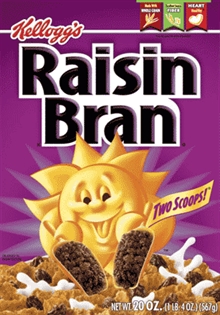

How interesting that
this article should come out on Comic Book Resources just as I am finishing up my brief (and wholly incomplete) tour of comics with good female lead characters. It’s coincidental, because
“iZombie” was one of the comics I was going to talk about.
“iZombie” is written by Chris Roberson, who also writes
“Cinderella,” which I mentioned
here. Roberson, who also writes science fiction novels, is fast becoming one of my favorite comics writers.
Here’s how the CBR article explains the comic:
In actuality, the plot of "iZombie" is fairly simple: a girl named Gwen died and woke up a zombie. She has to eat a brain every month, "because if she doesn't, she goes all George Romero 'Night of the Living Dead,' shambling, mindless zombie-thing," said Roberson.In the article, Roberson, conveniently, talks about writing female characters:
"It's actually easier for me to write strong female characters than it is for me to write kick-ass, macho guys, because kick-ass, macho guys I can't relate to at all," said Roberson. Citing his mother, sisters, wife and seven-year old daughter as inspiration Roberson continued, "Strong female characters, I don't even have to pause to think about what would interest or motivate them, because I see it around me all the time."“iZombie” is drawn by the incomparable
Mike Allred, of “
Madman,” “Atomics,” and “X-Force” fame.
I have bought almost everything Allred has ever done. (For some reason I didn’t make it through his “Red Rocket 7” series of a few years ago, but that’s the exception and not the rule.) His skill just keeps increasing. His art is clean, and simple, yet unique and instantly recognizable. If he isn’t one of the best artists in comics, he’s close.
The first “iZombie” trade paperback is coming out soon, and I’d recommend it with one caveat: While the concept is great, I thought the story started kind of slow because Roberson and Allred had a lot of pieces to introduce and then put in motion. I stuck with it because I trust Roberson and Allred to pull it all together in the end.
It’s also possible “iZombie” will read better in larger chunks when compiled in a trade paperback. I have found a few other series to be like that, including “100 Bullets,” and “Fables,” and I am considering dropping monthly issues of “House of Mystery” in favor of the trades.
For “iZombie,” though, the pace is picking up because the cauldron of characters are beginning to swirl and bubble together. It’s really getting fun, and I can recommend it wholeheartedly.
The last comic I wanted to touch on during this much-longer-than-I thought-it-would-be-when-I-started series, is “Black Widow,” which I have not even read.
Here are some preview pages.

Why on earth would I want to discuss something I have not even read?
Well, like “iZombie,” the first five issues of the latest incarnation of “Black Window” is written by a novelist, Marjorie Liu.
Wikipedia tells us she writes, “Paranormal romance and urban fantasy novels.”
She is also the only female comics writer of this bunch I have discussed.
I don’t know how many female novelists have been tapped to write comics, but I suspect the number isn’t all that high. There are probably a few, but I can’t think of any off the top of my head.
I didn’t come upon this fact until the fourth of her five issues came out, and I have not been able to get them all in one chunk. Rather than piecing the story together, I have been patiently waiting for a trade paperback or a comic store that has all of them. The preview pages do look great, though, don’t they?
Liu left after only five issues, stating in
her blog that she writes three or four novels a year as well as two other comics and didn’t have time to do any more.
In an interview over on the
Comic Vine Web site, Liu had this to say about female comics creators:
The industry itself, I think, is pretty warm toward female creators -- at least at Marvel. But we do seem to be a bit invisible, sometimes, as far as comic book readers go. There's a misconception from the public that there are no women whatsoever in comics -- besides the busty ladies on the covers -- and there's a sense, too, that the female comic book reader doesn't exist. Oh, that elusive creature! One day I’ll read all five issues in their entirety, and report back. I promise.
I’d like to end this back were I started three days and four blog posts ago: There are a lot of really great comics out there with female leads.
There are more yet than I have covered in this brief survey. I stopped with these seven, only because they are the titles I am following (Or, in one case, not following, and in another case waiting to follow.).
I think this a trend worth watching as comics readership continues to shrink and is increasingly dominated by 40-year-old men like me who have been reading conics forever and can’t bring themselves to stop.
Are female characters and/or creators a way to draw new readers into comics, or do they just provide a different window into the genre for those of us who have been here a while?
I guess we’ll see.









